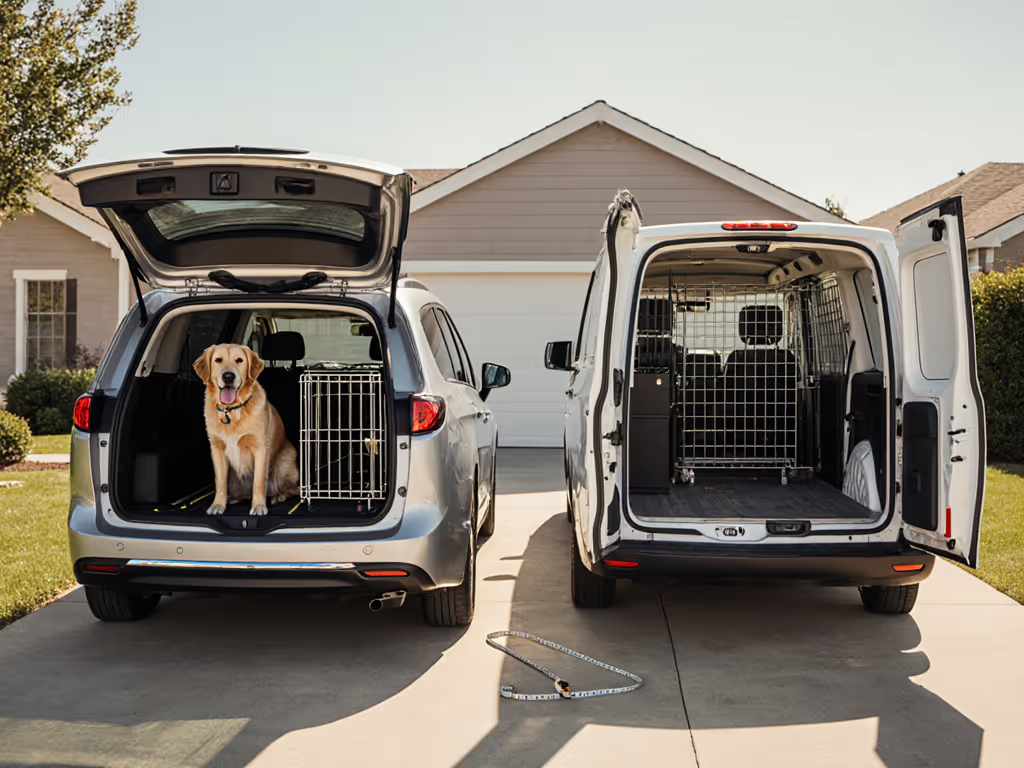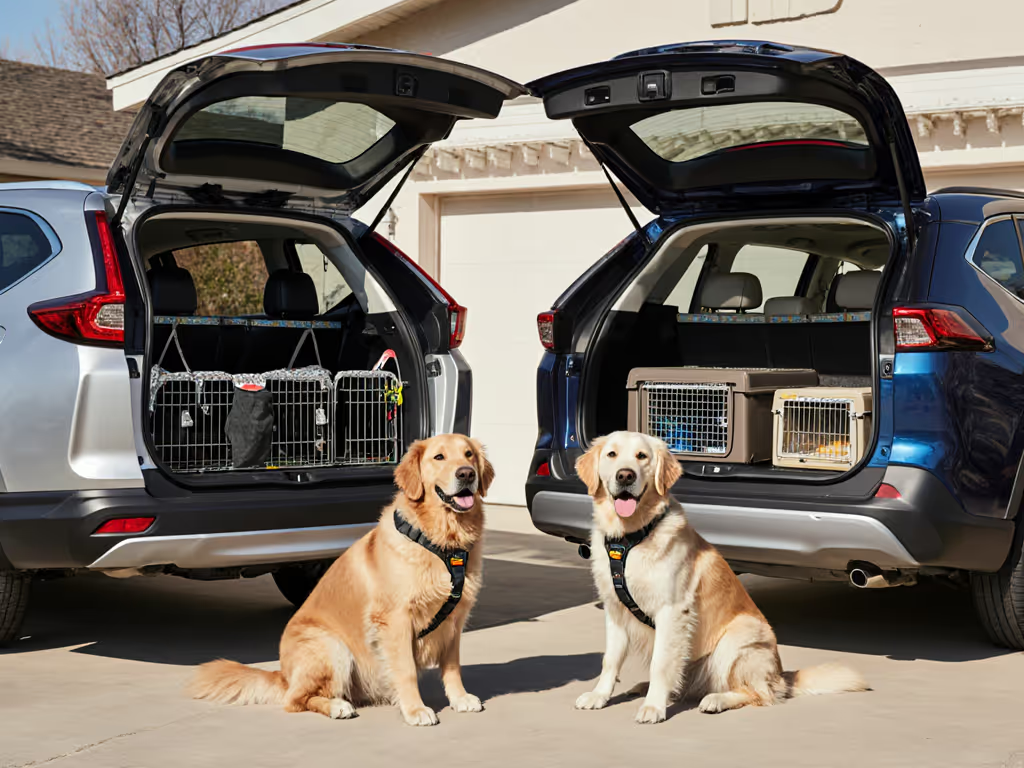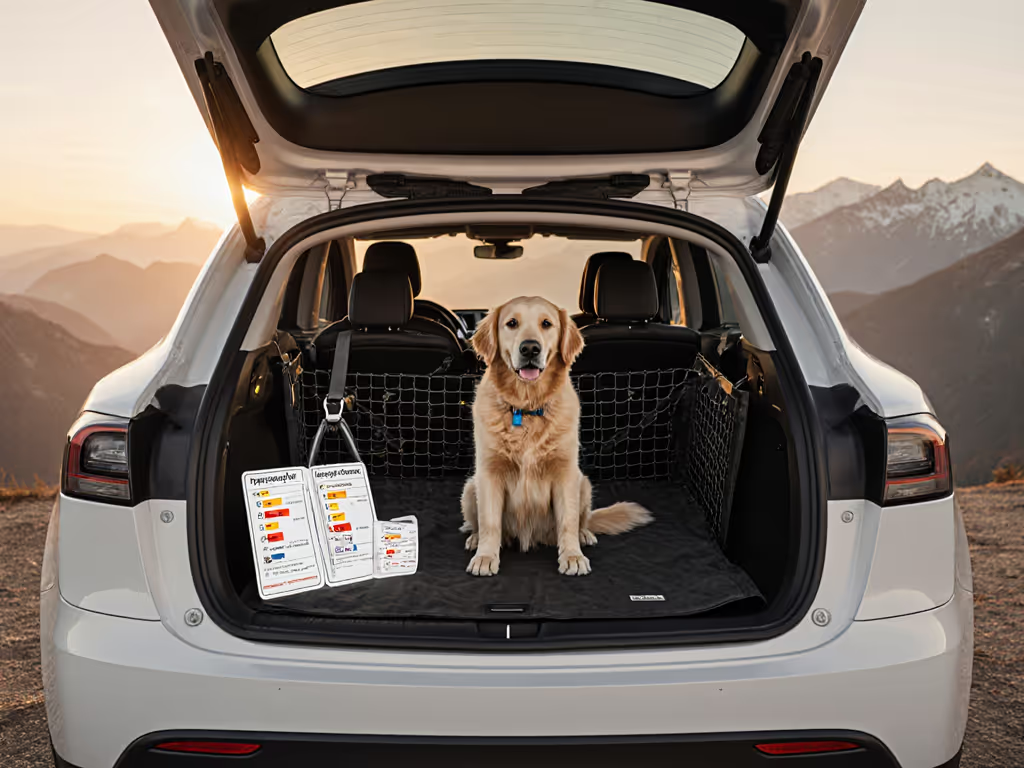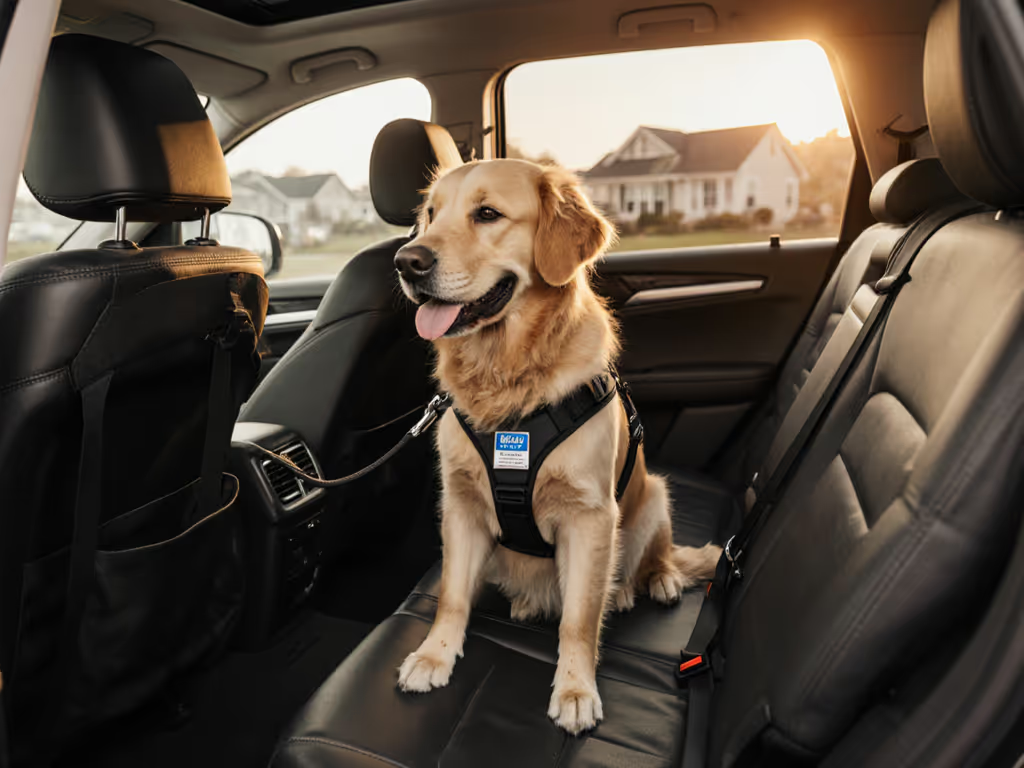
Small Dog Car Seats vs Big Dog Barriers: Perfect Fit
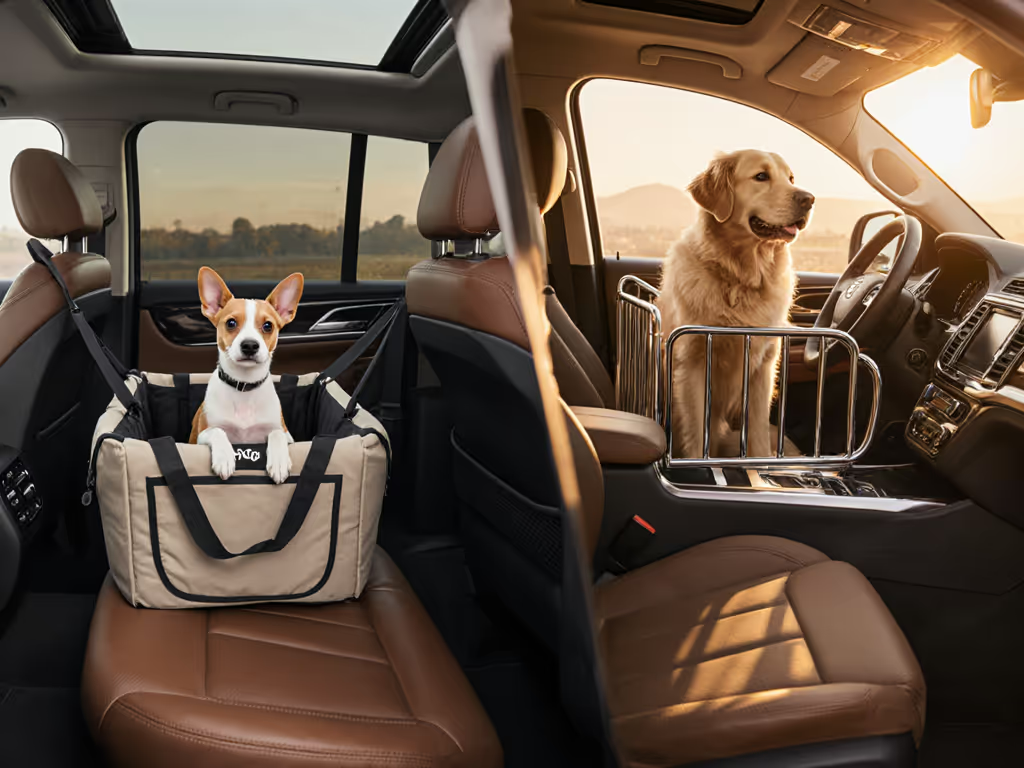
A calm cabin is a safety feature, not a luxury (a principle that reshaped my approach after a chaotic parallel parking incident involving groceries, a stroller, and my 60-pound dog). That's why choosing between small dog car seats and cargo barriers for dogs isn't just about comfort, it's about creating a space-efficient, low-maintenance system where gear stays put and your dog settles instantly. For midsize SUV owners like me juggling daily commutes and weekend adventures, the right solution must integrate seamlessly with your vehicle's architecture while reducing cognitive load. Let's break down how to match your dog's needs to precision-engineered solutions that protect both your interior and your focus on the road.
1. Small Dog Car Seats: Where Precision Meets Peace of Mind
For dogs under 20 pounds (think Cavalier King Charles Spaniels, Dachshunds, or Toy Poodles), small dog car seats transform anxious passengers into relaxed co-pilots. These aren't glorified baskets, they are engineered ecosystems with three non-negotiable features: vehicle-specific anchoring, optimized sightlines, and maintenance-light materials. Unlike generic hammocks that sag into footwells, true best dog car seats leverage headrest posts and seatbelt anchors to eliminate shift during emergency braking, a detail crash-tested in models like the PetSafe Happy Ride Booster. Its triple-attachment system (headrest strap, lower seat strap, and seatbelt loop) creates a stable platform where a dog can't lunge forward, preventing both distraction and impact injuries. Crucially, the elevated design lets small breeds see outside (a proven motion sickness reducer), while the fleece liner provides non-slip footing during turns.
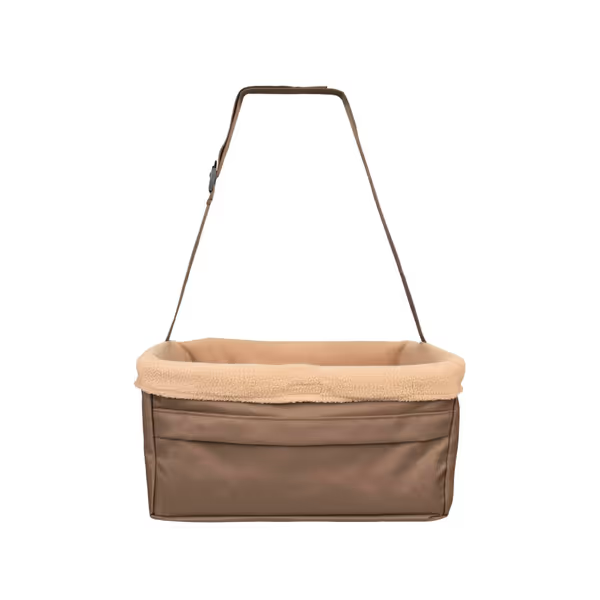
PetSafe Happy Ride Booster Seat
Cleanup time: Less than 60 seconds with a microfiber cloth. No shampooing, no residue.
I've tested dozens of booster seats in my own crossover, and the aesthetic-aware ones share subtle traits: low-profile frames that don't block rearview mirrors, neutral fabrics matching OEM upholstery, and storage pockets sized for actual essentials (treats, not tennis balls). The TRIXIE Convertible Lite nails this with its folded-down side panels, no wrestling through zippers when your Pomeranian needs quick bathroom breaks. Most importantly, these seats shouldn't rattle. If hardware clicks against glass during driving, it's a stress signal for noise-sensitive dogs. My rule? If you can't hear the seat over cabin noise, it's engineered right.
2. Cargo Barriers for Big Dogs: Beyond Basic Mesh Panels
When your German Shepherd or Labrador needs space, cargo barriers for dogs must solve two problems: unrestricted movement behind a secure partition and structural integrity during sudden stops. SUV dog barriers for big dogs aren't "one-size-fits-all" wire panels, they're geometry-specific systems aligned to your vehicle's wheel wells, cargo slope, and anchor points. Witnessing a 90-pound dog lunge over a flimsy barrier during braking taught me that gaps above center consoles or beside rear seats are failure points. Modern solutions like the K&H Pet Cot (modified with barrier straps) create a modular base: its 7-inch ground clearance prevents cargo-area vomit cleanup, while the breathable mesh won't trap heat on summer drives. Paired with seat-back anchors, it forms a seamless wall no dog can vault.
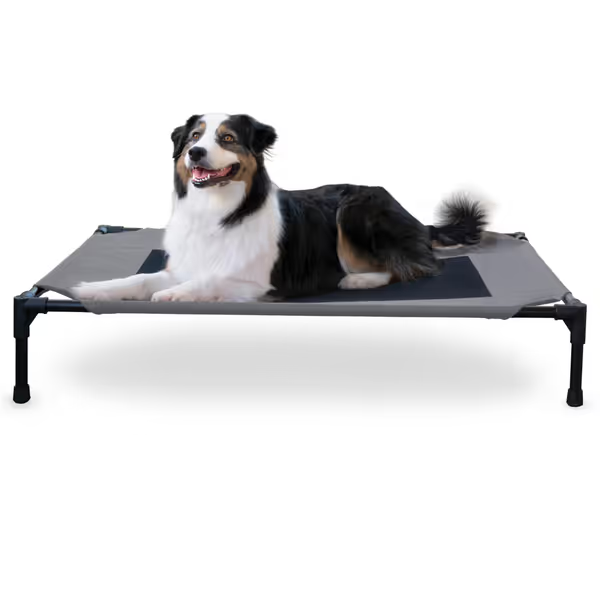
K&H Outdoor Elevated Dog Cot
For pickup trucks or wagons, telescoping barriers like the PetSafe Happy Ride ramp (deployed vertically) outperform rigid panels. Their adjustable width accommodates odd interior angles, critical for today's SUVs with dual rear-wheel arches. Measure your cargo height with seats up: if your hatch slopes downward, a barrier must clear the lowest point (usually 28-32 inches) to prevent sagging. I learned this after a failed trip where a "universal" barrier collapsed when my dog leaned against it mid-turn. Now, I verify compatibility using my vehicle's LATCH points as reference (the only truly stable anchor). Remember: breed-specific travel gear accounts for paws on the move. A Great Pyrenees needs overhead clearance to stand; a French Bulldog requires ventilation slits near the floor.
3. Fit First: Why Generic Gear Fails Your Cabin
Measurement-anchored decisions prevent 90% of car travel disasters. Too many buyers assume "fits most SUVs" means it fits theirs. Your vehicle's seatback angle, headrest post spacing, and cargo tie-down locations dictate what works. For vehicle-specific differences and top picks, see our SUV vs sedan dog barrier comparison. Example: Midsize crossovers like the Honda CR-V have narrow gaps between rear seats, requiring barriers with <4-inch lateral flex. Full-size SUVs (e.g., Chevrolet Suburban) demand wider coverage to block third-row access. Always:
- Measure your dog lying down (nose to tail + 6 inches)
- Check seatback angles (tape measure + level app)
- Map anchor points (LATCH hooks, cargo loops, headrest posts)
I recently helped a Lab owner realize his "perfect-fit" barrier had 3-inch gaps beside the center console, exactly where his dog squeezed through to chew seatbelt buckles. A truly integrated system uses existing hardware: Rabbitgoo's triple-folding barrier, for instance, clips into cargo anchors without drilling. Similarly, car accessories for dog travel like the TRIXIE seat include seatbelt loops sized for thicker SUV belts, unlike economy-car models that slip off. Pro tip: Test fitment before installing harnesses. A wobbling seat compromises tether effectiveness, creating false security.
4. Multi-Dog & Human Logistics: The Overlooked Reality
When you've got two dogs (or kids + dogs), solutions must coexist with child seats and 60/40 splits. This is where SUV dog barriers for big dogs pull double duty: a properly tensioned mesh barrier behind the rear seats keeps large breeds contained while allowing small dogs to ride in booster seats up front (with airbags deactivated). Never stack solutions (for example, a cargo barrier plus a seat hammock) since that creates tripping hazards. For multi-dog SUVs, I recommend splitting zones: small dogs in tethered seats, large dogs in cargo behind a rigid barrier. The K&H cot's portability shines here, it folds flat when you're solo-traveling but deploys instantly as a barrier base for group trips.
Cleanup time: Wipe down barrier poles with soapy water. No disassembly required.
Crucially, ventilation must be addressed. Dogs in cargo areas overheat 40% faster than rear-seat passengers (per 2023 PetMD climate studies). If your barrier blocks rear AC vents, add a magnetic vent deflector ($8 at auto stores). I keep one clipped to my sun visor (it takes 10 seconds to install and redirects airflow without blocking sightlines). Also, avoid solutions that disable seat sensors; if your cargo barrier pressures the rear seat, some vehicles trigger passenger-airbag warnings. Test with a 10-pound bag of rice before your trip.
5. Maintenance-Light Systems: Preserving Calm Long-Term
True cabin calm comes from solutions that stay clean and structured. Low-contrast, OEM-like gear in charcoal or slate gray hides dirt better than beige fabrics and complements modern interiors. Prioritize wipeable materials: the PetSafe booster’s nylon shell resists hair embedding, while the K&H cot's mesh dries in 15 minutes, no mold traps for muddy excursions. Avoid plush covers; they absorb odors and require machine washing, breaking your "set-and-forget" system. For barrier poles, silicone-coated steel prevents rattling against window glass (a common stressor for anxious dogs).
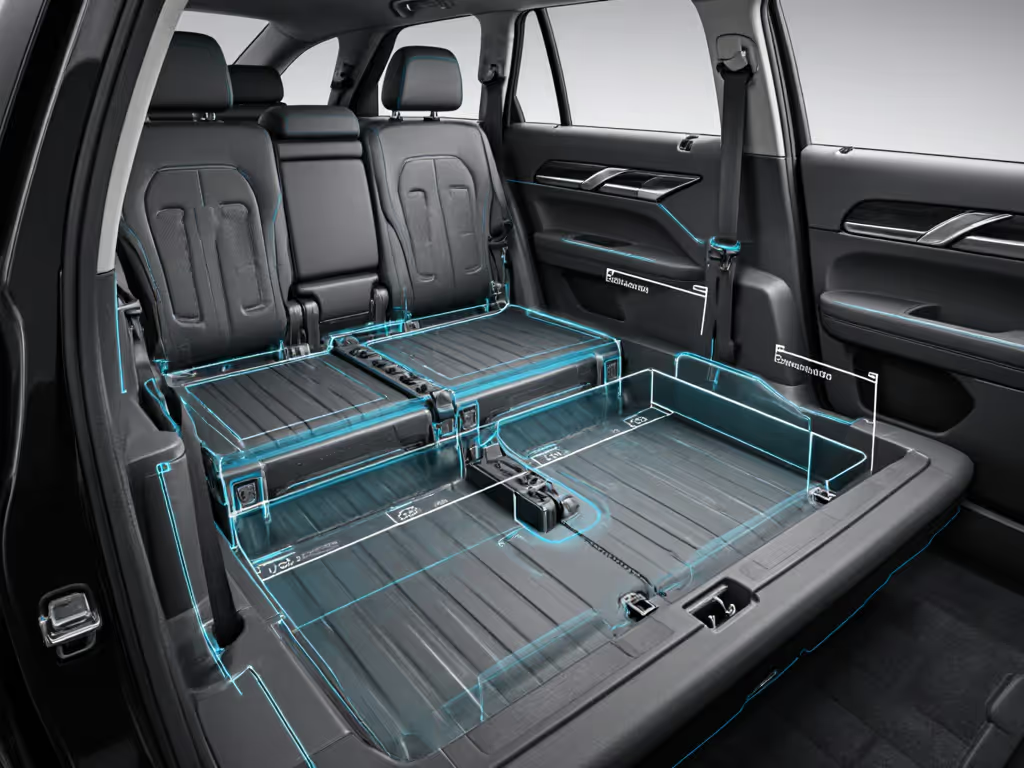
Your checklist:
- Noise test: Shake the installed product. If it vibrates, it'll distract during drives.
- One-minute install: If setup takes longer, you won't use it consistently.
- Soap-and-water cleanability: No specialty cleaners needed.
- Modular growth: Does it adapt if your dog gains weight or you add a puppy?
That parallel-parking chaos I mentioned? Solved by modular bins (for groceries), a low-profile crate, and a seat-back barrier that folds flat when not needed. Now, my dog hops into her zone without prompting, groceries stay organized, and I exit the car calm, not rearranging gear. A tidy cabin isn't fussy, it's functional safety.
Cleanup time: 5 minutes monthly. Your peace of mind? Priceless.
Your Next Step: Measure Once, Travel Confidently
Before buying anything, measure your vehicle's rear seatback width and cargo height at the narrowest point (usually above wheel wells). Input these specs plus your dog's weight into Rabbitgoo's online fit tool, which maps compatibility to 400+ vehicle models. Then, test your top contender in a parking lot: load it with a 10-pound sandbag, drive 20 mph, and brake firmly. If the gear shifts more than an inch, keep searching. True safety-forward solutions stay put through real-world maneuvers. When you find yours, you'll feel the difference before the engine even starts, because a calm cabin is where focus begins.
Related Articles

